
Edinburgh: The Jewel of Scotland
Discover the enchanting blend of history, culture, and natural beauty in Edinburgh, Scotland's captivating capital city.
Edinburgh, the capital city of Scotland, is a place where history and modernity blend seamlessly. The city is known for its stunning architecture, from the medieval Old Town with its narrow alleys and historic buildings to the elegant Georgian New Town with its grand squares and terraces. Edinburgh Castle, perched atop Castle Rock, offers breathtaking views of the city and is a must-visit for history enthusiasts. The city is also famous for its festivals, particularly the Edinburgh Festival Fringe, the world's largest arts festival, which draws performers and visitors from all over the globe. During the summer months, the streets come alive with music, theatre, comedy, and dance. The Royal Mile, a historic street that stretches from the castle to the Palace of Holyroodhouse, is lined with shops, pubs, and attractions, making it a vibrant hub of activity. Nature lovers will appreciate the city's proximity to natural beauty. Arthur's Seat, an ancient volcano, offers panoramic views after a rewarding hike. The Royal Botanic Garden provides a peaceful retreat with its diverse plant collections. For a taste of local culture, visitors can explore the many museums and galleries, such as the National Museum of Scotland and the Scottish National Gallery, which showcase the country's rich heritage and artistic achievements. Dining in Edinburgh is a treat for the senses, with a variety of restaurants offering everything from traditional Scottish fare to international cuisine. Don't miss the chance to try haggis, a beloved local dish. As night falls, the city's pubs and bars come to life, offering a friendly atmosphere to enjoy a dram of whisky or a locally brewed beer.
Local tips in Edinburgh
- Wear comfortable shoes as the city has many cobblestone streets and hills.
- Book tickets for popular attractions like Edinburgh Castle and the Royal Yacht Britannia in advance to avoid long queues.
- Visit during the summer to experience the vibrant festivals, but be prepared for crowds and higher accommodation prices.
- Take a guided ghost tour to explore the city's spooky past and hidden underground vaults.
- Use public transport or walk to explore the city, as parking can be challenging and expensive.
Neighbourhoods in Edinburgh
Edinburgh: The Jewel of Scotland
Edinburgh, the capital city of Scotland, is a place where history and modernity blend seamlessly. The city is known for its stunning architecture, from the medieval Old Town with its narrow alleys and historic buildings to the elegant Georgian New Town with its grand squares and terraces. Edinburgh Castle, perched atop Castle Rock, offers breathtaking views of the city and is a must-visit for history enthusiasts. The city is also famous for its festivals, particularly the Edinburgh Festival Fringe, the world's largest arts festival, which draws performers and visitors from all over the globe. During the summer months, the streets come alive with music, theatre, comedy, and dance. The Royal Mile, a historic street that stretches from the castle to the Palace of Holyroodhouse, is lined with shops, pubs, and attractions, making it a vibrant hub of activity. Nature lovers will appreciate the city's proximity to natural beauty. Arthur's Seat, an ancient volcano, offers panoramic views after a rewarding hike. The Royal Botanic Garden provides a peaceful retreat with its diverse plant collections. For a taste of local culture, visitors can explore the many museums and galleries, such as the National Museum of Scotland and the Scottish National Gallery, which showcase the country's rich heritage and artistic achievements. Dining in Edinburgh is a treat for the senses, with a variety of restaurants offering everything from traditional Scottish fare to international cuisine. Don't miss the chance to try haggis, a beloved local dish. As night falls, the city's pubs and bars come to life, offering a friendly atmosphere to enjoy a dram of whisky or a locally brewed beer.
When is the best time to go to Edinburgh?
Iconic landmarks you can’t miss
Edinburgh Castle
Discover the rich history and breathtaking views of Edinburgh Castle, Scotland's iconic fortress and a must-visit landmark for every traveler.

National Museum of Scotland
Discover Scotland's rich heritage at the National Museum of Scotland, where history, culture, and nature come alive in a stunning architectural setting.
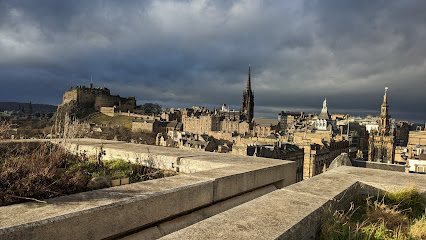
Princes Street Gardens
Experience the beauty and tranquility of Princes Street Gardens, a lush urban oasis in the heart of Edinburgh, surrounded by historic landmarks and vibrant culture.

Palace of Holyroodhouse
Discover the grandeur of the Palace of Holyroodhouse, Scotland's official royal residence, with its stunning architecture and rich historical significance.

Royal Mile
Explore Edinburgh's Royal Mile: a historic street brimming with culture, shops, and stunning architecture, connecting the castle to the palace.

Dean Village
Explore Dean Village, a picturesque historical gem in Edinburgh, where stunning architecture and serene riverside paths await your visit.

Camera Obscura & World of Illusions
Experience the enchanting world of illusions and breathtaking views at Camera Obscura, Edinburgh's top interactive museum.

The Real Mary King's Close
Explore the underground world of The Real Mary King's Close in Edinburgh, where history and mystery come alive beneath the city's streets.

The Scotch Whisky Experience
Explore the rich heritage of Scotch whisky at The Scotch Whisky Experience in Edinburgh, the ultimate destination for whisky enthusiasts.

The Edinburgh Dungeon
Explore the spine-chilling history of Scotland at The Edinburgh Dungeon, where immersive experiences and dark tales await every visitor.

Scott Monument
Explore the Scott Monument in Edinburgh, a stunning tribute to Sir Walter Scott with breathtaking views and rich literary history.

Surgeons' Hall Museums
Explore the Surgeons' Hall Museums in Edinburgh for an immersive experience into the history and evolution of surgery and medical practices.

Museum of Edinburgh
Explore Edinburgh's rich history and culture at the Museum of Edinburgh, showcasing captivating exhibits and engaging stories from Scotland's capital.

Craigmillar Castle
Explore Craigmillar Castle, a stunning medieval fortress in Edinburgh, rich in history and surrounded by beautiful gardens, perfect for all ages.

Nelson Monument
Explore the Nelson Monument in Edinburgh, a tribute to Admiral Nelson with breathtaking views and rich maritime history, perfect for tourists and history lovers.

Unmissable attractions to see
Edinburgh Castle
Discover the storied past and breathtaking views at Edinburgh Castle, a must-see historical landmark in the heart of Scotland.

The Kelpies
Discover The Kelpies in Falkirk, Scotland - a stunning blend of art and heritage that captures the spirit of Scotland's equestrian legacy.

Princes Street Gardens
Explore the beauty and tranquility of Princes Street Gardens, a must-visit urban oasis in the heart of Edinburgh, surrounded by stunning historical landmarks.

Royal Botanic Garden Edinburgh
Experience the tranquility and beauty of Royal Botanic Garden Edinburgh, a must-visit destination for nature lovers and tourists in the heart of Scotland.

Palace of Holyroodhouse
Explore the Palace of Holyroodhouse, Scotland's official royal residence, and immerse yourself in its enchanting history and stunning architecture.
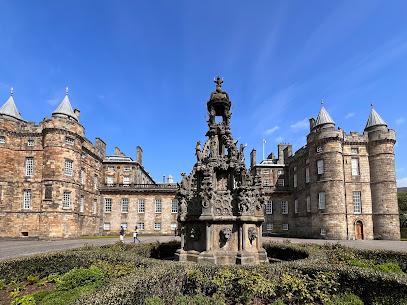
The Falkirk Wheel
Explore the unique engineering wonder of The Falkirk Wheel, where boats are lifted in a breathtaking display of innovation and design.
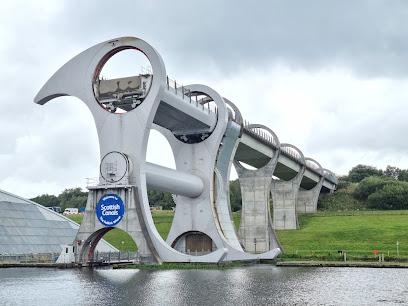
Royal Mile
Discover the rich history and vibrant culture of Edinburgh along the iconic Royal Mile, connecting the city's grandest landmarks.

Dean Village
Explore the tranquil charm of Dean Village, a historic oasis in Edinburgh with stunning landscapes and rich cultural heritage.

Camera Obscura & World of Illusions
Explore the magic of perception at Camera Obscura & World of Illusions, an engaging museum in Edinburgh filled with interactive exhibits and stunning views.

Holyrood Park
Explore Holyrood Park: Edinburgh's Natural Gem with Stunning Views, Rich History, and Outdoor Adventures Awaiting Every Visitor.

The Real Mary King's Close
Discover the hidden history and captivating stories of Edinburgh's past at The Real Mary King's Close, a unique historical landmark.
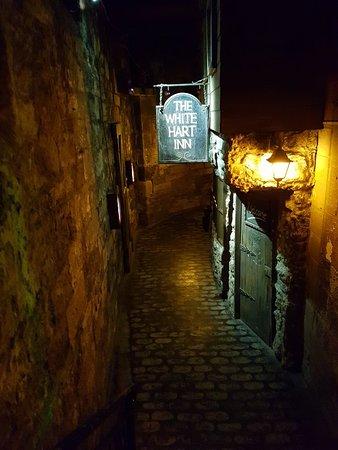
The National Wallace Monument
Explore the National Wallace Monument in Stirling, a historical landmark celebrating Scotland's heritage with breathtaking views and rich exhibits.

Edinburgh Zoo
Explore the wonders of wildlife at Edinburgh Zoo, home to rare species, conservation efforts, and unforgettable family experiences in the heart of Scotland's capital.

Edinburgh Zoo
Explore Edinburgh Zoo, Scotland's premier wildlife park dedicated to conservation and home to an incredible array of animals from around the world.

The Royal Yacht Britannia
Explore the Royal Yacht Britannia in Edinburgh: A historic floating palace showcasing royal life and maritime heritage.
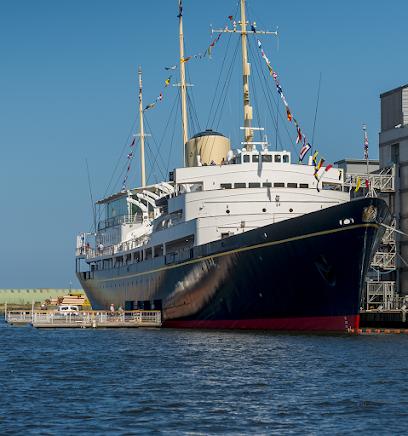
Essential places to dine
Dishoom Edinburgh
Experience authentic Indian flavors at Dishoom Edinburgh, where every dish tells a story in a cozy café atmosphere.

Makars Mash Bar
Savor authentic Scottish flavors at Makars Mash Bar—where tradition meets modernity in the heart of Edinburgh.

The Devil's Advocate
Experience the best of Scottish cuisine at The Devil's Advocate, where tradition meets innovation in the heart of Edinburgh.

MUMS Great Comfort Food
Experience the heartwarming flavors of Scotland at MUMS Great Comfort Food—your go-to spot for delicious breakfasts and brunches in Edinburgh.

Amarone
Experience authentic Italian flavors at Amarone in Edinburgh, where exquisite pizzas and pastas await in an inviting atmosphere.

The Ivy On The Square Edinburgh
Experience exquisite British cuisine in the heart of Edinburgh at The Ivy On The Square - where tradition meets contemporary elegance.

Chaophraya Thai Restaurant
Experience authentic Thai cuisine and stunning city views at Chaophraya Thai Restaurant in Edinburgh's vibrant dining scene.
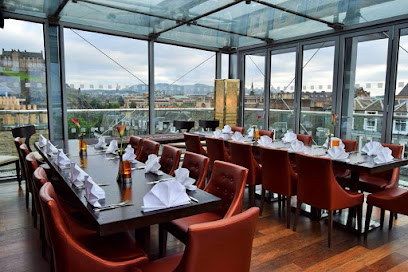
The Witchery by the Castle
Discover luxury dining and enchanting accommodations at The Witchery by the Castle in Edinburgh—where history meets exquisite British cuisine.
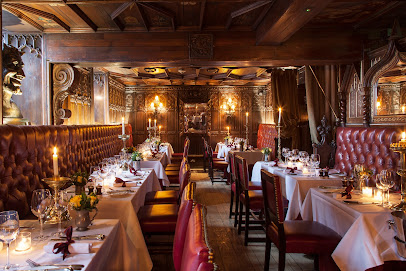
Howies Restaurant
Savor authentic Scottish cuisine at Howies Restaurant in Edinburgh—where tradition meets modern dining.

The Kitchin
Discover culinary artistry at The Kitchin - Edinburgh's premier fine dining destination showcasing exquisite Scottish cuisine.

The Piper's Rest
Discover The Piper's Rest in Edinburgh - where traditional Scottish cuisine meets a vibrant pub atmosphere in the heart of the city.

The Outsider Restaurant
Experience Scottish hospitality at The Outsider Restaurant in Edinburgh – where traditional flavors meet modern culinary artistry.

BABA
Experience authentic Lebanese flavors fused with Mediterranean delights at BABA in the heart of Edinburgh.

Six by Nico Edinburgh
Experience innovative cuisine at Six by Nico Edinburgh – where each meal tells a story through its unique six-course tasting menu.

Tattu Edinburgh
Experience exquisite Chinese dining in Edinburgh at Tattu – where tradition meets innovation in every dish.

Markets, malls and hidden boutiques
The Wyrd Shop
Discover unique gifts and mystical treasures at The Wyrd Shop in Edinburgh's historic Canongate neighborhood.

Flying Tiger Copenhagen
Explore a whimsical range of affordable gifts and homewares at Flying Tiger Copenhagen in Edinburgh's Waverley Mall.

One World Shop
Explore One World Shop in Edinburgh for unique, handcrafted gifts that support fair trade and celebrate global cultures.

Heritage of Scotland
Explore the heart of Scotland at Heritage of Scotland, a treasure trove of kilts, accessories, and unique souvenirs in Edinburgh's historic Lawnmarket.

Galaxy
Discover unique souvenirs and collectibles at The Galaxy Gift Shop in Edinburgh – a treasure trove for fans of all things whimsical.

The Scotland Shop
Discover traditional Scottish gifts and clothing at The Scotland Shop in Edinburgh, where heritage meets quality craftsmanship.
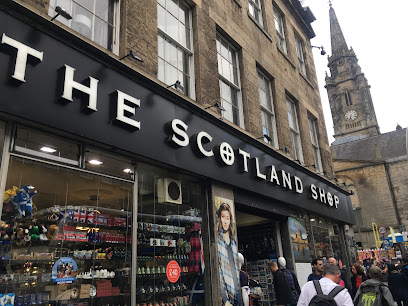
Heritage of Edinburgh
Explore the Heritage of Edinburgh: Your destination for authentic Scottish gifts, clothing, and accessories in the heart of Scotland's capital.

Museum Context
Explore authentic Scottish gifts and homewares at Museum Context, a charming gift shop in the heart of Edinburgh, reflecting local craftsmanship and culture.
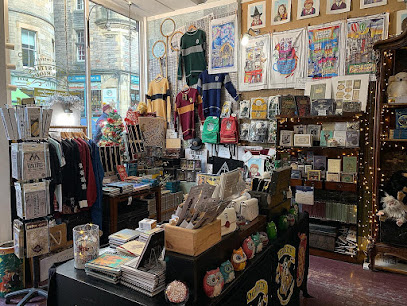
Carnivàle Vintage
Discover the charm of bygone eras at Carnivàle Vintage, Edinburgh's premier vintage clothing shop for unique and stylish finds.

ScotlandShop
Explore ScotlandShop in Edinburgh for unique gifts, clothing, and homewares that celebrate Scottish craftsmanship and culture.

Great Scot
Explore the essence of Scotland at Great Scot, Edinburgh's premier gift shop for authentic Scottish souvenirs and unique treasures.

Curiouser & Curiouser
Explore the whimsical world of Curiouser & Curiouser, Edinburgh's charming gift shop offering unique treasures and delightful keepsakes.

I Love Scotland
Explore I Love Scotland Gift Shop in Edinburgh for unique souvenirs and a taste of Scottish culture that you can take home.
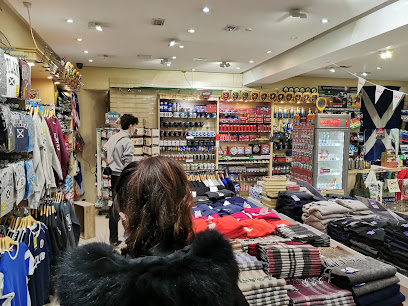
Godiva
Explore Godiva Boutique in Edinburgh for unique ladies' fashion, featuring designer and vintage clothing, alongside stunning handmade jewelry.
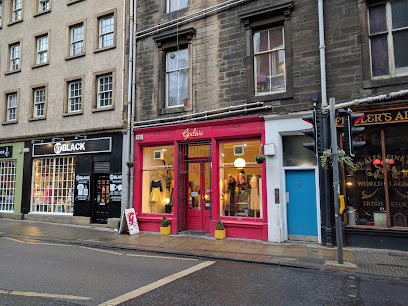
House of Scotland
Explore the House of Scotland for unique Scottish gifts and souvenirs in the heart of Edinburgh's Royal Mile.
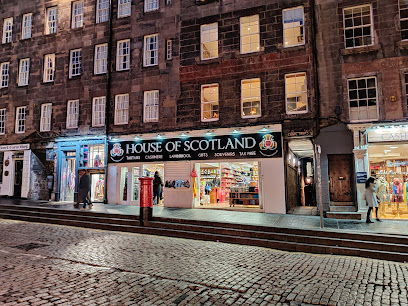
Essential bars & hidden hideouts
Frankenstein
Experience the unique blend of history, nightlife, and cuisine at Edinburgh's iconic Frankenstein Pub.

The Devil's Advocate
Experience the vibrant flavors of Scotland at The Devil's Advocate, Edinburgh's beloved gastropub, where tradition meets innovation.

The Bow Bar
Experience the charm of Edinburgh at The Bow Bar, a historic pub offering a vast selection of whiskies and local ales in a cozy atmosphere.

Panda & Sons
Discover the enchanting world of Panda & Sons, Edinburgh's top cocktail bar known for innovative drinks and a warm, inviting atmosphere.

The Voodoo Rooms
Experience the vibrant atmosphere of The Voodoo Rooms, a must-visit gastropub in Edinburgh featuring exquisite dining, lively music, and signature cocktails.
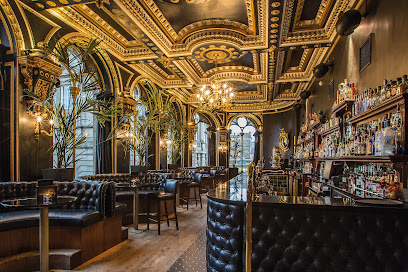
Hoot The Redeemer
Discover Hoot The Redeemer, Edinburgh's whimsical cocktail bar, offering innovative drinks and a vibrant atmosphere that enchants every visitor.

The Cocktail Geeks
Explore the vibrant mixology scene at The Cocktail Geeks in Edinburgh, where unique cocktails and a stylish atmosphere await.

Bramble Bar
Discover Bramble Bar in Edinburgh, a cocktail haven offering unique drinks, a cozy atmosphere, and delicious small plates in the heart of the city.
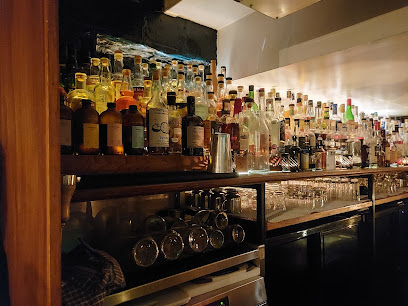
The Rat Pack - Piano & Cocktail Bar
Experience the vibrant nightlife of Edinburgh at The Rat Pack - Piano & Cocktail Bar, where live music meets expertly crafted cocktails.

Thistle Street Bar
Experience the charm of Edinburgh at Thistle Street Bar, a cozy pub offering a delightful selection of drinks and a welcoming atmosphere.
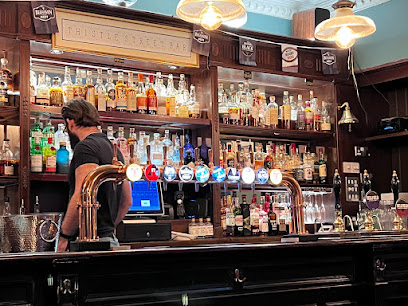
Dragonfly
Experience the art of cocktail making at Dragonfly, Edinburgh's vibrant cocktail bar known for its unique concoctions and lively atmosphere.

Under The Stairs
Discover the charm of Under The Stairs, Edinburgh's cozy bar and restaurant, where local flavors meet a vibrant atmosphere.

Heads & Tales Gin Bar
Experience Edinburgh's vibrant cocktail culture at Heads & Tales Gin Bar, where artisanal gin meets a stylish atmosphere.

The Oz Bar
Discover The Oz Bar in Edinburgh: your go-to spot for refreshing drinks, live music, and a warm, welcoming atmosphere that captures the spirit of the city.

The Raging Bull
Discover the vibrant cocktail culture at The Raging Bull, a must-visit bar in Edinburgh known for its unique drinks and lively atmosphere.

Local Phrases
-
- HelloHullo
[həˈləʊ] - GoodbyeCheerio
[tʃɪəˈriːəʊ] - YesAye
[aɪ] - NoNaw
[nɔː] - Please/You're welcomePlease/Ye're welcome
[pliːz/jər ˈwɛlkəm] - Thank youCheers
[tʃɪəz] - Excuse me/SorryPardon/Sorry
[ˈpɑːdən/ˈsɒri] - How are you?Hoo are ye?
[huː ər jə] - Fine. And you?Awricht. An' you?
[ˈɛːraɪt. ən juː] - Do you speak English?Dae ye speak Scots?
[deɪ jə spiːk skɒts] - I don't understandAh dinnae ken
[ə dɪnɪ ken]
- HelloHullo
-
- I'd like to see the menu, pleaseI'd like tae see the menu, please
[aɪd laɪk tə siː ðə ˈmɛnjuː pliːz] - I don't eat meatAh dinnae eat meat
[ə dɪnɪt iːt miːt] - Cheers!Slàinte!
[ʃlɑːntʃə] - I would like to pay, pleaseI wid like tae pay, please
[aɪ wʊd laɪk tə peɪ pliːz]
- I'd like to see the menu, pleaseI'd like tae see the menu, please
-
- Help!Help!
[hɛlp] - Go away!Gae awa!
[ɡeɪ əˈweɪ] - Call the Police!Ca' the Polis!
[kɔː ðə ˈpɒlɪs] - Call a doctor!Ca' a doctor!
[kɔː ə ˈdɒktər] - I'm lostAh'm tint
[əm tɪnt] - I'm illAh'm no weel
[əm nəʊ wiːl]
- Help!Help!
-
- I'd like to buy...I'd like tae buy...
[aɪd laɪk tə baɪ] - I'm just lookingAh'm juist haein a keek
[əm dʒʌst hɛɪn ə kiːk] - How much is it?Hoo muckle is it?
[huː ˈmʌkəl ɪz ɪt] - That's too expensiveThat's ower pricey
[ðats aʊər ˈpraɪsi] - Can you lower the price?Can ye gie's a guid price?
[kæn jiː ɡiːz ə gʊd praɪs]
- I'd like to buy...I'd like tae buy...
-
- What time is it?Fit time is it?
[fɪt taɪm ɪz ɪt] - It's one o'clockIt's yin o'clock
[ɪts jɪn əˈklɒk] - Half past (10)Hauf past (10)
[hɑf pæst (10)] - MorningMornin
[ˈmɔrnɪn] - AfternoonEfternuin
[ˈɛftərnun] - EveningEenin
[ˈiːnɪn] - YesterdayYestreen
[ˈjɛstrin] - TodayThe day
[ðə deɪ] - TomorrowThe morn
[ðə mɔrn] - 1One
[wʌn] - 2Twa
[twɑː] - 3Three
[θriː] - 4Fower
[ˈfaʊər] - 5Fife
[faɪv] - 6Sax
[saks] - 7Seiven
[ˈsɛvən] - 8Aucht
[ɔːxt] - 9Nin
[nɪn] - 10Ten
[tɛn]
- What time is it?Fit time is it?
-
- Where's a/the...?Whaur's a/the...?
[ʍaʊrz ə/ðə] - What's the address?Fit's the address?
[fɪts ðə ˈædrɪs] - Can you show me (on the map)?Can ye shaw me (oan the map)?
[kæn jiː ʃɔ miː (ɒn ðə mæp)] - When's the next (bus)?Whit time's the next (bus)?
[ʍɪt taɪmz ðə nɛkst (bʌs)] - A ticket (to ....)A tikkit (tae ....)
[ə ˈtɪkɪt (tʰe ....)]
- Where's a/the...?Whaur's a/the...?
History of Edinburgh
-
Edinburgh's history traces back to the early Middle Ages. The city was initially established as a fort by the Gododdin people, known as Din Eidyn. It became a key stronghold due to its strategic location atop Castle Rock, providing a defense against invaders.
-
Edinburgh Castle, perched upon Castle Rock, has been a significant landmark since the 12th century. It has served as a royal residence, military stronghold, and now a major tourist attraction. The castle has witnessed numerous historical events, including the Wars of Scottish Independence and the birth of King James VI of Scotland.
-
The Royal Mile is Edinburgh's historic heart, stretching from Edinburgh Castle to the Palace of Holyroodhouse. This cobblestone street has been the backdrop for parades, markets, and crucial moments in Scottish history. It houses notable buildings such as St Giles' Cathedral and the Scottish Parliament.
-
The 18th century marked Edinburgh as the center of the Scottish Enlightenment, a period of intellectual and scientific accomplishments. Figures like David Hume, Adam Smith, and James Hutton contributed to philosophy, economics, and geology, shaping modern thought.
-
Built in the 18th century to address overcrowding in the Old Town, Edinburgh's New Town is a masterclass in Georgian architecture. Designed by James Craig, its wide streets, squares, and elegant buildings contrast with the Old Town's medieval layout.
-
Edinburgh is renowned for its annual festivals, particularly the Edinburgh Festival Fringe, which began in 1947. This festival has grown to become the world's largest arts festival, hosting thousands of performances across various genres, drawing visitors from around the globe.
-
Arthur's Seat is an extinct volcano and the highest point in Edinburgh, offering panoramic views of the city. It is part of Holyrood Park, which has historical significance dating back to prehistoric times and has inspired numerous myths and legends.
-
Inspired by the Parthenon in Athens, the National Monument of Scotland on Calton Hill was intended to commemorate Scottish soldiers who died in the Napoleonic Wars. Construction began in 1826 but was never completed, earning it the nickname 'Scotland's Disgrace.'
-
The Stone of Destiny, also known as the Stone of Scone, is an ancient symbol of Scottish monarchy. Traditionally used in the coronation of Scottish kings, it was taken by England in 1296 and returned to Scotland in 1996. It is now displayed in Edinburgh Castle.
-
During the Industrial Revolution, Edinburgh expanded rapidly, transforming into a hub for printing, brewing, and engineering. The city's population grew, leading to significant urban development and the establishment of new institutions and infrastructure.
Edinburgh Essentials
-
Edinburgh is well-connected to various parts of the UK and the world. The primary airport is Edinburgh Airport (EDI), located about 12 km west of the city center, offering numerous international and domestic flights. From the airport, you can take the Airlink 100 bus, tram, or a taxi to the city center. Edinburgh Waverley Railway Station, situated in the heart of the city, connects Edinburgh to other major cities like London, Glasgow, and Manchester via an extensive rail network. National Express and Megabus offer long-distance bus services to and from Edinburgh.
-
Edinburgh has an efficient public transport system managed by Lothian Buses, including buses and trams that cover most parts of the city. A day ticket offers unlimited travel on buses and trams for a fixed price. Taxis and ride-sharing services like Uber are also available. For a more scenic experience, consider walking or biking through the city; many attractions are within walking distance of each other. Bicycles can be rented from various locations around the city.
-
The official currency in Edinburgh is the British Pound Sterling (GBP). Credit and debit cards are widely accepted in most establishments, including shops, restaurants, and hotels. Contactless payment is commonly used. ATMs are plentiful throughout the city, but it is always a good idea to have some cash on hand for smaller vendors or in case of emergencies. Currency exchange services are available at the airport, major banks, and dedicated exchange offices in the city center.
-
Edinburgh is generally a safe city for tourists, but like any urban area, it is advisable to stay vigilant. Areas such as Grassmarket and Cowgate can get rowdy at night due to the nightlife scene. Avoid walking alone in poorly lit areas and keep an eye on your belongings in crowded places, especially during festivals. Be cautious in neighborhoods like Niddrie and Wester Hailes, which have higher crime rates. Always use licensed taxis and be aware of your surroundings.
-
In case of an emergency, dial 999 for immediate assistance from police, fire, or medical services. The Royal Infirmary of Edinburgh is the main hospital for emergencies. Pharmacies are readily available for minor health issues. It is advisable to have travel insurance that covers medical emergencies. For non-emergencies, the NHS 24 service can be reached by dialing 111 for health advice.
-
Fashion: Do dress in layers as the weather can be unpredictable. Waterproof clothing is advisable. Avoid overly casual attire in fine dining establishments. Religion: Do respect places of worship. Remove hats and speak softly inside churches and cathedrals. Public Transport: Do queue patiently and have your fare or ticket ready. Don’t talk loudly or play music without headphones. Greetings: Do greet people with a friendly 'hello' or 'hi.' A handshake is common in formal settings. Eating & Drinking: Do try local dishes like haggis, neeps, and tatties. Don’t forget to tip around 10% in restaurants if service is not included.
-
To experience Edinburgh like a local, explore beyond the main tourist spots. Visit neighborhoods like Stockbridge for its Sunday Market and Leith for its vibrant port culture. Take a walk up Arthur’s Seat for panoramic views of the city. Enjoy a pint in a traditional pub and strike up a conversation with locals. Attend local events and festivals like the Edinburgh Festival Fringe, the world’s largest arts festival, held every August. For a quieter experience, visit the Royal Botanic Garden or take a stroll along the Water of Leith Walkway.
Trending Landmark in Edinburgh
-
Edinburgh Castle
-
National Museum of Scotland
-
Princes Street Gardens
-
Palace of Holyroodhouse
-
Royal Mile
-
Dean Village
-
Camera Obscura & World of Illusions
-
The Real Mary King's Close
-
The Scotch Whisky Experience
-
The Edinburgh Dungeon
-
Scott Monument
-
Surgeons' Hall Museums
-
Museum of Edinburgh
-
Craigmillar Castle
-
Nelson Monument
Nearby Cities to Edinburgh
-
Things To Do in Stirling
-
Things To Do in Dundee
-
Things To Do in Glasgow
-
Things To Do in Newcastle upon Tyne
-
Things To Do in Aberdeen
-
Things To Do in Durham
-
Things To Do in Inverness
-
Things To Do in Ramsey
-
Things To Do in Kirk Michael
-
Things To Do in Laxey
-
Things To Do in Onchan
-
Things To Do in Peel
-
Things To Do in Douglas
-
Things To Do in Ballasalla
-
Things To Do in Castletown
















